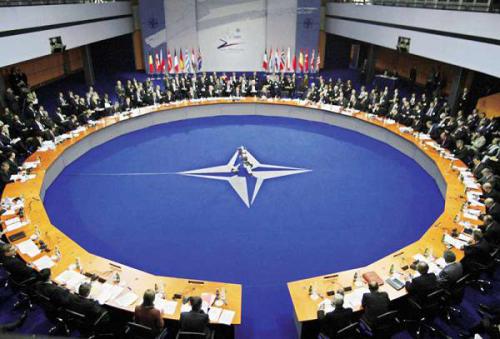Military Alliance and state interaction
Alliance I: Securitization and Military Build-up or Alliance
 Rhetoric or discourse related to military alliances or build ups can be influenced by perceptions and state interaction. A variety of historical factors have shaped a situation in which states have engaged in military build ups or military alliances to address imbalances in energy supplies throughout the world.
Rhetoric or discourse related to military alliances or build ups can be influenced by perceptions and state interaction. A variety of historical factors have shaped a situation in which states have engaged in military build ups or military alliances to address imbalances in energy supplies throughout the world.
For example, when American combat troops were deployed in southern Kazakhstan in 1997, Pentagon officials said that their only objective was to demonstrate American support for the stability of the former Soviet republics and that in Caspian region American needs stable and independent states capable to defend themselves (Klare 2002: 2). Most observers understood that much more was at stake. Vast reserves of oil and natural gas in the Caspian region represent a strategic and economic interest to the United States.
Operation CENTRAZBAT ‘97 demonstrated that the United States possessed both the will and capacity to defend that interest with military forces if necessary (ibid: 4). The American military policy’s determination to ensure US access to overseas supplies of vital resources represents a signal of a dramatic shift toward a more self-interested American strategic agenda (ibid: 6). Military power and alliances were deployed to secure energy resources and compensate for a deficit in energy supplies.
A military alliance and arms race can result from external and internal factors.
Turning first to external factors, the realists argue that it can result from a reaction by one state to another state’s “divide and rule” actions or when the other state is viewed as a military threat. Realists argue that even if states seek to pursue greater security through purely defensive actions that action might raise the “security dilemma” of other states. It has traditionally referred to the action-reaction spiral (an arm race) (Art 1996: 7). This dilemma dictates that actions taken by states to increase their own security, regardless of intent, will lead to rising insecurity for others as these other states can’t afford to view even only defensive actions as other than threatening (Baylis 2008: 103).
The security dilemma differs from security competition and counts for more simple phenomenon which could be only one of the forms that security competition can take (ibid: 8). In discussion about the security of Western Europe and the role of the United States and NATO in the European security, Art argues that despite the existence of the European Security and Defence Policy and the European Monetary Union, security and power still motivate Western European states in their relation to one another. The political elites of Europe do not take a commitment to the rule of law and a pacific resolution in disputes among states for granted. A fear of renationalization and a repeat of the worst experiences from the past lead some to advocate American political and military presence as being crucial if Europe as a whole is ever to achieve a large measure of peace (ibid: 9).
This discussion corresponds to the first kind of alliance in Table 2 which is based on the military approaches to foreign policy and can lead to a military alliance against or excluding the stronger state. On the other hand, Sweden’s political elites, which formally have opposed a military alliance, argue that this kind of alliance limits the freedom of action in foreign policy. This corresponds to the second kind of alliance found in Table 2 which considers a civilian economic alliance with other states and also excludes the more powerful state considered to be a security threat.
As I suggested before, a military alliance can also reflect internal factors, not simply threats. For example, the interests of a military industrial complex or political power linked to the accumulation of military, economic, and political power can lead elites to exaggerate threats and raise military budgets. In contrast to the realists then, an alliance can reflect an exaggerated threat mediated by perceptions and encouraged by the political or economic interests of foreign policy elites tied to militarism, military firms, or military bureaucracies (Feldman 1995; Feldman 2007).
. . .
Source book: Swedish Threat Perception of Nord Stream and the Dual State Energy Security Model: An Analysis of Realism, Resource Interests and Securitization. Author Dragica Suc
